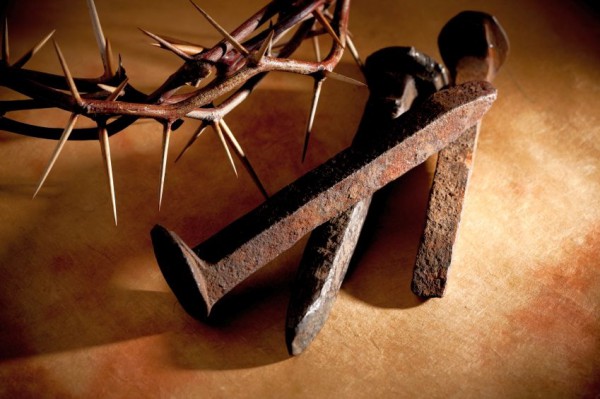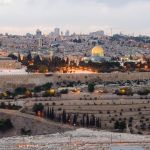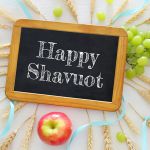“From the day after the Sabbath, the day you brought the sheaf [omer] of the wave offering, count off seven full weeks. Count off fifty days up to the day after the seventh Sabbath, and then present an offering of new grain to the Lord.” (Leviticus 23:15–16)
As the sun sets on Wednesday May 25, 2016, Lag b’Omer begins. This one-day holiday is celebrated between the Passover and Shavuot (Weeks/Pentecost).
Although, this holiday was instituted by the rabbis , it does fall within the Biblically mandated observance of counting the Omer, the period of time that links Passover (the exodus from Egypt) with Shavuot (the giving of the Torah).
Lag is the number 33 (since the Hebrew letters lamud (for “l”) and gimmel (for “g”) correspond to numerical values of “30” and “3”), and Omer, which is a unit of measure, means “sheaves of a harvested crop.”
So, Lag b’Omer means the 33rd day of the counting of the Omer.
Why Did the Lord Command the Omer to Be Counted?
“Count off seven weeks from the time you begin to put the sickle to the standing grain. Then celebrate the Feast of Weeks [Shavuot] to the Lord your God by giving a freewill offering in proportion to the blessings the Lord your God has given you.” (Deuteronomy 16:9–10)
In a modern society that is disconnected from God and its agricultural roots, the command to count the Omer may seem distant or irrelevant. But it does have some wonderful lessons for Believers, especially since it was during the counting of the Omer that Yeshua (Jesus) appeared to His disciples after the resurrection.
In ancient times, the Jewish People cut down an omer of barley and brought it to the Temple as an offering on the second day of Passover.
The Torah commanded the Jewish people to count from the time of this ‘wave offering’ the seven weeks until the evening of Shavuot.
Although Jews can no longer bring their Omer Offering to the Temple (because it was destroyed in AD 70), it’s still observed as a period of time to reflect on one’s character before Shavuot, which in Jewish tradition is when Moses received the Torah on Mount Sinai.
Since the days are counted between the commemoration of the Exodus from slavery in Egypt (Passover) and the commemoration of the giving of Torah (Shavuot), the Jewish People are reminded that redemption from slavery was incomplete until God gave us His guide to holiness, through the Word of God (the Torah).

In ancient times, animal sacrifices were not the only kind of sacrifice brought to the Temple. Many sacrifices consisted of agricultural produce. The Omer Offering of barley on the second day of Passover was one such sacrifice.
Prophetic Significance of Counting the Omer
“For somewhere He has spoken about the seventh day in these words: ‘And on the seventh day God rested from all His work.’” (Hebrews 4:4)
Many of the numbers we find in the Bible have deep prophetic and spiritual significance which can be lost with a casual reading. The number seven is one of twelve numbers that are especially prominent.
In the Bible, seven represents perfection, completion, and rest. Including derivative words such as seventh and sevens, this word occurs 562 in the Scriptures.
In Genesis, we read that God created the universe in six days, but on the seventh day, His work was completed and therefore He rested (Genesis 2:1–4).
“By the seventh day God had finished the work He had been doing; so on the seventh day He rested from all His work. And God blessed the seventh day and made it holy, because on it He rested from all the work of creating that He had done.” (Genesis 2:2–3)
The number seven is also prominent in Bible prophecy and is used frequently in the books of Daniel and Revelation. In the latter, we read of seven angels, seven eyes, seven kings, seven crowns, seven horns, seven seals, seven golden candlesticks, seven golden vials, etc.
“Then one of the four living creatures gave to the seven angels seven golden bowls filled with the wrath of God, who lives for ever and ever.” (Revelation 15:7)
The counting of the Omer, then, is inescapably significant since it counts seven weeks of seven (49).
At the end of this period is the 50th day — Shavuot, which Hellenist Jews called Pentecost, from the Greek word for fiftieth.
The 50th day can be taken to represent the Year of Jubilee, the time the shofar (ram’s horn) sounds, all slaves go free, and all debts are canceled.
In a similar way that the counting of the Omer marks time between the physical redemption of Israel from Egypt and the spiritual redemption through the giving of the Law, the same timeline is evident between the death of Messiah on the execution stake (cross) as the perfect offering for sin, and the giving of the Ruach HaKodesh (Holy Spirit) to Believers on Shavuot (Pentecost).
In the Upper Room, the Holy Spirit descended as a sign of the Brit Hadashah (the New Covenant), thereby writing the Torah on Believers’ hearts, supernaturally empowering them to lead holy lives.
Consequently, the same way Israel celebrates Pentecost 50 days after Passover, the Christian Church celebrates Pentecost 50 days after Easter.

In Acts 1:13 we read how the Jewish People from around Israel and the world gathered in Jerusalem to reaffirm their commitment to the covenant of Moses —including those who believed in Messiah.
Counting the Days until His Return
“Teach us to number our days aright, that we may gain a heart of wisdom.” (Psalm 90:12)
The counting of the Omer reminds us to be counting the days until Yeshua’s soon return so that we may lead lives worthy of those who have been counted redeemed.
Traditionally, the tone of the Counting of the Omer is not one of joy, but of somber introspection, as people prepare themselves to receive the Torah by reflecting on how to be a better person.
To help us in this pursuit, each week of the Omer is dedicated to a spiritual quality that we aspire to attain in greater measure:
- chesed (kindness),
- gevurah (strength),
- tiferet (harmony and compassion),
- netzach (endurance),
- Hod (humility),
- yesod (bonding),
- Malchut (sovereignty and leadership).
Each day of the week is also dedicated to reflecting on one particular aspect; for instance, on the second day of the first week, observant Jewish people consider the gevurah that is in chesed (the strength that is in kindness).
In this way, we focus on one particular aspect of developing a better character.
False Hopes Lead to Mourning
The days of counting the Omer is also a period of semi-mourning during which time observant Jews do not celebrate weddings or cut their hair.
Scholars are not actually sure of the historical reasons for mourning during counting the Omer, other than a mention in the Talmud (oral law) of a plague during this time that may have killed 24,000 of the students of the great Jewish sage, Rabbi Akiva.
The one day that is exempted from this period of semi-mourning is Lag b’Omer, which is usually celebrated with huge bonfires that represent the great light of the Torah all across the Land of Israel.
Ironically, most Jewish people really don’t know why we celebrate the 33rd day of the counting of the Omer.
Some suggest the plague abated for this one day.
The word “plague,” however, could also have been a code word for the disaster of Simon bar Kokhba’s failed rebellion against the Roman Empire in 132 CE — an attempt which Rabbi Akiva supported.
Many Jewish people at that time thought that Bar Kokhba was the promised Messiah who would deliver the Jews from the oppression of the Romans.
With Bar Kokhba’s defeat, many were bitterly disappointed, as they witnessed their Messianic expectations shattered.
Today, the Jewish People continue to wait for the Promised Messiah.
They do not realize that He has already come as Yeshua HaMashiach (Jesus the Messiah) to save us — not from political oppression, but from the spiritual oppression of the enemy of our souls.
And when He does come in fulfillment of our eager expectation, the Jewish People will understand that it is His Second Coming — a time when all nations will recognize His authority.
“Look! The LORD is coming from His dwelling place; He comes down and treads on the heights of the earth.” (Micah 1:3)


















